This is an image of Triton.
Click on image for full size
NASA
Surface of Triton
This beautiful image of Triton reveals many interesting features of its surface. The surface of Triton is halfway between
Ganymede's and
Europa's (two of Jupiter's moons).
Ancient portions of the surface have many craters, and newer portions smooth, or have grooves. The different ages may indicate the presence of active processes in the inside.
Fancy image processing has revealed what it may look like to practically be standing on the surface of Triton.
You might also be interested in:

How did life evolve on Earth? The answer to this question can help us understand our past and prepare for our future. Although evolution provides credible and reliable answers, polls show that many people turn away from science, seeking other explanations with which they are more comfortable.
...more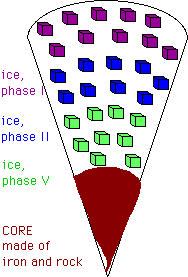
The diagram to the left shows a drawing of the possible interior of Triton. The composition of Triton is mostly ice, therefore there is probably a small core of some rocky material buried inside, overlain
...more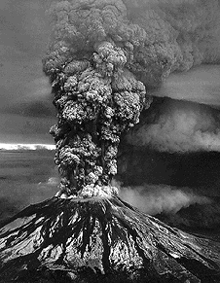
Let's look at the evidence: Mercury Venus The Moon Mars Io Europa Ganymede Callisto Triton Miranda What about Jupiter, Saturn, Uranus, Neptune, Titan, or Pluto? These planets or moons either have no surface,
...more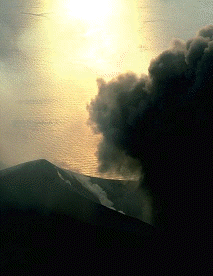
Volcanism is part of the process of bringing material from the deep interior of a planet and spilling it forth on the surface. Eruptions also eject new molecules into the atmosphere. Volcanism is part
...more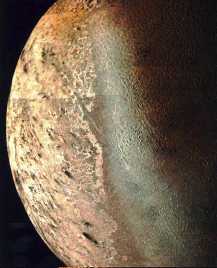
Triton was discovered by W. Lassell in 1846. Of the 8 moons, it is the 2nd farthest from Neptune, with a standoff distance of 354,800 km. Triton may be one of the largest of the icy moons, is comparable
...more
When the Voyager mission flew by Triton, it took the spectra of the surface. The spectra matched that of ice and also several different kinds of snow (crushed ice). The Voyager spacecraft could not measure
...more
This beautiful image of Triton reveals many interesting features of its surface. The surface of Triton is halfway between Ganymede's and Europa's (two of Jupiter's moons). Ancient portions of the surface
...more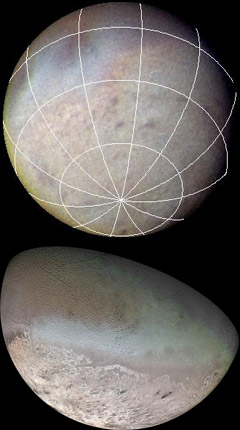
Triton is the largest moon of Neptune. It is a very unusual moon. The poles of Triton are especially interesting. Triton has a polar ice cap at the South Pole. Earth, of course, has ice caps at its poles
...more












